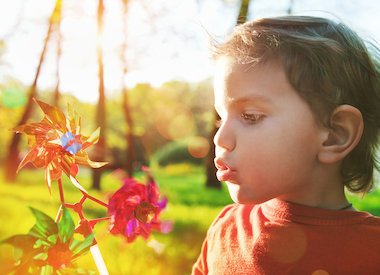What’s in your… nature/garden area
Add to My Folder
In this series, Fe Luton explores the ways in which you can set up and run areas of continuous provision. Ideas for organisation, resources and planning are explored.

How should my nature/garden area be arranged?
Nature can and should be explored both inside and outside the classroom. However, indoor nature areas and outdoor gardens need a fair bit of care and attention otherwise they quickly descend into a messy and uninviting mess.
An indoor nature area should be a seasonally changing one that you and the children work together on. Not only does this help show children how the seasonal cycle happens in real time, but it also gets them observing the world around them.
A study commissioned by the Royal Horticultural Society Gardening in 2010 suggests that gardening with children helps them become more resilient, confident, eager to learn and have healthier lifestyles. It also impacts positively on their problem-solving skills, literacy and mathematical development.
Consider the following when organising your nature/garden areas:- Make sure that you know what you are doing and when to plant things. Also try and plant an array of things – not just beans and sunflowers!
- Consider creating raised beds. Not only are they a great height for children, but they are also protected from trample damage.
- Consider setting up a time-lapse camera where seeds or bulbs have been planted to allow children to look back through the growth process.
- Don’t forget about all the other aspects of growing beyond planting seeds and bulbs – water supply, gardening skills, composting, gardening guidance/websites.
- Have indoor plants as well as outdoor ones – children can care for them and observe them all year round.
- Incorporate regular activities such as tastings, aroma experiences, investigations and art into your nature area – not only does this keep the area fresh and interesting, but it also encourages the use of different senses and means of observation and exploration.
- Keep tools and equipment clean and dry to prevent rusting or stagnation.
What resources should I have in my nature/garden areas?
Your resources will be different depending on if you have an indoor or outdoor nature area. Children should also have things to take inside from outside, as well as being able to take the observation and art equipment outside.
Outside nature/garden area
- Growing areas – annual flowers, fruit and vegetables, for example, nasturtiums, sweet peas and sunflowers, beans, peas, tomatoes and strawberries. Don’t forget planters, pots and hanging baskets as well.
- Gardening training area – why not have a separate area were children can try out digging and using other gardening tools and techniques. They could also practise filling pots with soil and preparing seed trays.
- Sensory resources – planting a sensory section of your garden will encourage sensory exploration. Plant a variety of herbs, grasses with soft, hairy leaves or tactile plants like lambs-ear. Include sensory natural materials like sand, pebbles, bark, pine cones and other tree seeds and crunchy leaves.
- Log piles and bug hotels – create piles of logs and twigs or create a bug hotel for children to observe.
- Bird boxes and baths – bird boxes and baths will encourage birds into your outdoor space where children can observe them. They may even nest there if they can find a quiet nook!
- Compost heap and water butt – try and create a compost heap or have a bin installed to help children explore and run a sustainable garden. If possible have a Perspex® front to your compost to enable children to observe mini-beasts. A water butt is also a sustainable way of watering your garden.
Indoor nature area
Try to ensure that the area is well equipped for observation – magnifying glasses, sample trays, mirrors, lights, drawing equipment and reference materials are all key to making the area interesting and active. Create a seasonal art folder for children to add in observations and drawings. Encourage them to look at detail not just the whole, so have viewing grids and squares.
Already a member? Sign in below.
Published 6 March 2018
Reviews
You need to be signed in to place a review.